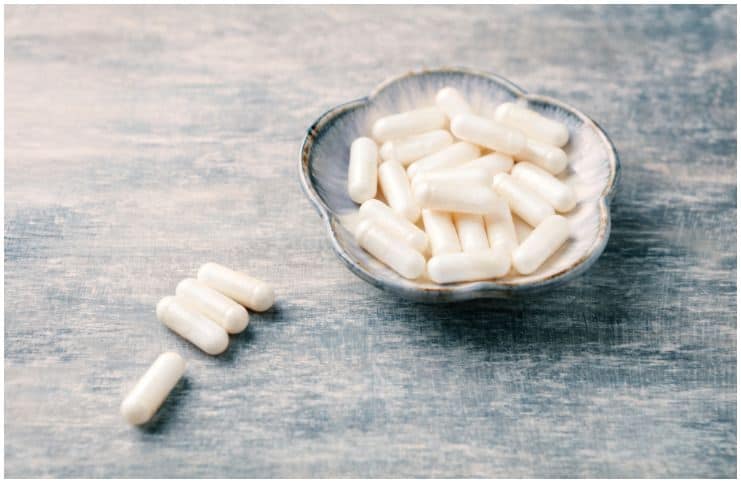Glycine – Side Effects, Definition, Facts, Functions, Uses, Health Benefits, Food Sources:
Facts
It is the simplest non-essential amino acid and is obtainable by hydrolysis of proteins. Sweet-tasting, it was among the earliest non-essential amino acids to be isolated from gelatin (in 1820, by Henri Braconnot).
It is ambivalent, meaning that it can be outside or inside of the protein molecule. Molecular formula – C2H5NO2.
Uses and functions
It has several important roles within the human body. It’s essential for the production of many various acids, such as – nucleic acids, bile acids, porphyrins, and creatine phosphate.
On a larger scale, this amino acid is involved in the support and regulation of many important processes. For instance, this amino acid helps with the breakdown of fat by regulating the concentration of bile acids.
This amino acid is necessary for the central nervous system function. Studies have shown that this non-essential amino acid can help inhibit the neurotransmitters that cause hyperactivity, seizure activity, and manic depression (bipolar).
It is also required for the biosynthesis of heme, which is a key component of hemoglobin, which is very important in the maintenance of red blood cell integrity and normal oxygen-carrying capacity.
Health benefits
It is one of the amino acids necessary for the biosynthesis of creatine. Creatine (a nitrogenous organic acid) provides muscles with a direct energy source and assists in building muscle tissue and strength.
Therefore, this amino acid is an important amino acid for athletes wanting to increase performance and muscle mass.
- This amino acid can also be converted to another neurotransmitter, serine (non-essential amino acid), as needed, and may be helpful in the management of schizophrenia.
- It helps with the regulation of blood sugars by transforming glucose into energy. There is strong evidence to support the use of this non-essential amino acid to improve long-term blood sugar levels in people suffering from type II diabetes.
- It’s also helpful for patients recovering from an operation or other causes of immobility because it can assist in avoiding muscle degeneration.
- It is useful in helping with the absorption of calcium in the body. Osteoporosis is a serious condition that causes bones to become porous and thin, decreasing bone strength and ultimately leading to an increased risk of breaking a bone. In the US, more than 10 million patients already have this condition. Furthermore, another 34 million have low bone density, placing them at high risk of developing osteoporosis.
- It can be used to help lower symptoms in patients suffering from leaky gut syndrome, according to research done by the Departments of Cell and Developmental Biology. The leaky gut syndrome is a condition that causes the intestinal lining to become inflamed. Drug use (particularly, antibiotics and anti-inflammatory drugs) and severe emotional stress or trauma, can be a contributing factors to this condition.
Food Sources
This amino acid can be found in – meats, dairy products, eggs, spirulina, spinach, watercress, horseradish, sesame seeds, flaxseeds, chia seeds, sunflower seeds, pumpkin seeds, millet, oatmeal, oat bran, soybeans, peanuts, corn, chickpeas, mung, beans, adzuki beans, navy beans, or red kidney beans.
Side Effects of Glycine
Individuals with liver or kidney disease should not consume this amino acid without consulting their health care specialist.
Taking any one amino acid (essential or non-essential) supplement can cause a disruption of the citric acid ( also known as the Krebs cycle), and cause an accumulation of nitrogen or ammonia in the body, which makes the kidneys and liver work harder to remove waste (detoxification).
Taking this amino acid along with Clozaril (clozapine) might decrease the effectiveness of Clozaril (clozapine).
Also, anyone taking anti-spastic drugs should consult a health care specialist before supplementing with this amino acid, since it theoretically could boost the effects of these medications.
READ THIS NEXT:
References https://pubchem.ncbi.nlm.nih.gov/compound/Glycine https://www.sciencedirect.com/topics/medicine-and-dentistry/glycine

